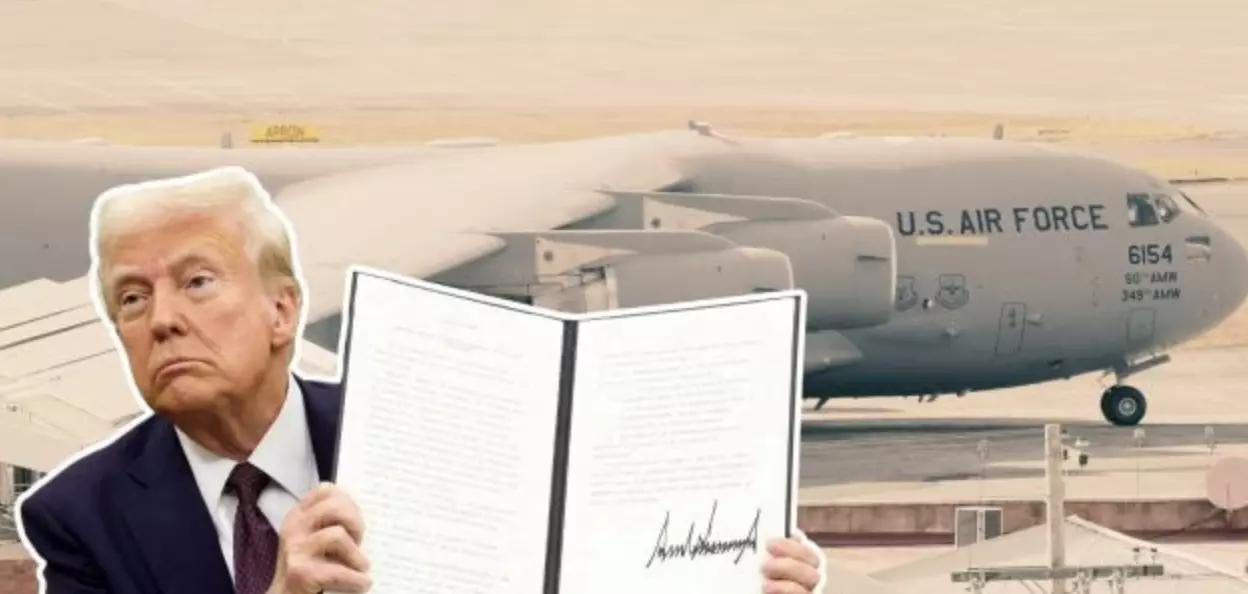Trump administration’s mass deportation efforts: What you need to know
Trump administration’s mass deportation efforts: What you need to know

As the Trump administration intensifies its anti-immigrant stance, a recent development saw a U.S. military plane transporting deported migrants to India. This move is part of a larger effort to remove undocumented immigrants from the U.S. under President Trump's leadership. Here’s everything you need to know about the deportation process and the current state of immigration policies.
1. Who is Being Deported and How Many Indians Are Affected?
The U.S. government is targeting undocumented migrants, many of whom have entered the country illegally. According to the New York Times, the Trump administration has begun deporting individuals apprehended during the previous Biden administration, with military aircraft now involved.
A significant number of deportees are from India. Around 20,407 undocumented Indian nationals are on the radar, with nearly 18,000 facing final removal orders. Around 2,500 are currently detained by the U.S. Immigration and Customs Enforcement (ICE). Some reports state that up to 200 Indian migrants were on a recent military flight.
In 2022, Pew Research Center noted that 725,000 Indians were part of the U.S.'s unauthorized immigrant population, making them the third-largest group in the country.
2. The Cost and Logistics of Deportation
Typically, deportations are carried out by ICE on commercial flights. However, military planes are now being used, drawing international attention. A military flight carrying 64 migrants to Guatemala reportedly cost the U.S. $4,675 per individual.
In addition to India, military aircraft have recently been used to deport migrants to countries like Guatemala, Peru, and Honduras. The increased use of military planes comes after some countries, including Colombia, resisted landing such flights on their soil.
3. Trump’s Escalating Anti-Immigration Agenda
From his first day in office, Trump has focused on eliminating illegal immigration, declaring it a "national emergency." Under his directive, ICE has received support from other federal agencies, such as the FBI and Border Patrol, to apprehend and deport undocumented migrants.
The Trump administration has also made significant policy shifts, including the abolition of guidelines that protected sensitive locations like schools and hospitals from immigration raids. Trump has also empowered the Defense Secretary to deploy military personnel to the southern border if needed.
Additionally, Trump has ended the practice of granting "parole" to those entangled in immigration issues and shut down the CBP One mobile app, which allowed migrants to schedule border appointments. Birthright citizenship for children born to undocumented immigrants has also been eliminated under his policies.
4. Increased Arrests and Detention Facilities
To manage the rising number of detainees, the U.S. has ramped up arrests and detention capacity. In late January 2025, Trump announced the construction of a new migrant detention facility at Guantanamo Bay, capable of holding 30,000 people. ICE has also expanded its operations, making approximately 1,000 arrests in the last week of January alone, which is triple the usual daily rate.
Other potential detention locations include the Buckley Space Force Base in Colorado.
5. Trump’s Use of Economic Pressure
Trump is leveraging economic pressure to ensure other countries cooperate with U.S. deportation efforts. When Colombia refused to allow a U.S. military plane to land, Trump retaliated by imposing a 25% tariff on all Colombian imports. This prompted Colombia to agree to bring deportees back via its own planes.
In January 2025, Trump also threatened to impose 25% tariffs on Canada and Mexico over illegal migration and drug trafficking, though both nations quickly reached agreements to strengthen border enforcement in exchange for a temporary tariff pause.
6. Political Ramifications
Trump’s immigration policies continue to be a central issue in U.S. politics. His strong anti-immigrant rhetoric has been a cornerstone of his 2024 election campaign. With India agreeing to take back undocumented migrants, concerns have arisen over the potential impact on legal migration, especially regarding the H-1B visa program, which is crucial for Indian workers in the U.S.
As the Trump administration moves forward with these sweeping deportation measures, the debate on immigration continues to shape U.S. foreign relations and domestic policy.

